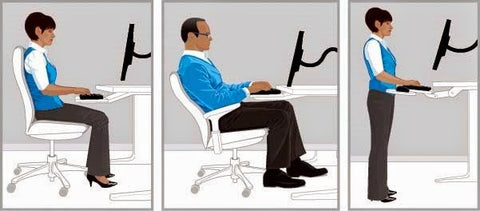October is Ergonomics Awareness month, and it’s a good time to create awareness of human factors and ergonomics in a variety of ways.
Although any work environment can expose employees to ergonomic hazards, exposure can be minimized by making the proper changes. However, we need to be aware of ergonomic risks/hazards that are present when we perform a variety of tasks before we make changes.
These risks are found not only when performing work tasks but when at home as well. You may be exposed to ergonomic risks while on the computer at work, but also when working on your car, pulling weeds, snow shoveling and more. If proper changes are not made, you may be looking at an injury!

Unfortunately, ergonomics-related injuries (such as overexertion and repetitive motion) may not be seen after a day, week or even a month of working. Instead, these cumulative trauma disorders (CTDs) take time to appear. Have you ever thought, “I’ve been doing this job for 10+ years and I’ve never had a problem or noticed pain until today?” This is quite common with ergonomics-related injuries, and it is the reason they are referred to as “cumulative trauma” disorders.
How common are these disorders? The Liberty Mutual Workplace Safety Index 2016 indicated that overexertion injuries (ergonomics-related) account for more than $15 billion. Unfortunately, these injuries also ranked number one at CSU. The bottom line here – ergonomics-related injuries are common and costly.
Although there are ergonomic issues in every job task, office and computer work is becoming more prevalent. Many of us may feel that that because we have a sit/stand workstation, adjustable ergonomic chair, etc. that the likelihood for pain and injury is minimized. This may be especially true for our new buildings on campus where height-adjustable tables have been implemented along with ergonomic chairs and other ergonomic accessories. However, as Dr. Alan Hedge at Cornell University has stated, “so-called ergonomic products do not guarantee healthy work posture!” The correct height of the table, height and position of the keyboard and mouse, monitor(s), etc., are crucial regardless of whether you are sitting or standing. Unfortunately, proper adjustments are often neglected.
Full article here from Colstate.org
Need Ergonomic training, assessments or product information to help you or your staff? Contact us today to see how we can work with you and your team and make your office a better place to work!
